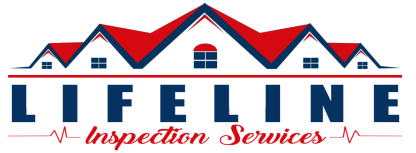Every year in the United States, there are more than 25,000 chimney fires incurring $125 million-plus in property damage. Flames in the lower chimney migrating upward can cause damage such as warping, cracking or melting of the masonry or metal chimney walls. Chimney fires can destroy houses and put lives at risk in the most severe instances. These tragedies can be preventable when you routinely clean the chimney as well as regularly inspect and repair it. With this in mind we at Lifeline Home Inspections would like to discuss the importance of chimney cleaning on a routine basis.
Prevent & Get Rid of Creosote Buildup
Creosote is the primary source of chimney fires. When byproducts from a fire such as smoke, vapor, and unburned wood condense as they move from the hot fireplace or wood stove into the cooler chimney as the highly flammable, dark brown substance coat chimney walls. The creosote build-up thick enough, creosote can catch fire, and that fire can spread and move up the flue should the temperature in the chimney flue. Exclusively burn seasoned hardwood that has dried for at least six months. Be sure it contains the moisture content of no more than 20%, which you can easily test with a wood moisture meter. To maintain adequate airflow, remember to always keep the damper open during a fire.
Annual Chimney Inspection
It’s vital to have a Chimney Safety Institute of America-certified chimney sweep inspect your fireplace or woodstove, chimney, and venting system once a year since many defects that lead to chimney fires, like a cracked flue liner, that aren’t visible to the naked eye. The professional can discover any damage as well as remove creosote, soot, or obstructions such as bird nests.
Chimney Cleaning
When walls have a ⅛-inch layer of build-up be sure to have the chimney clean. It is time for cleaning when you scratch a finger against a chimney wall and uncover one-eighth of an inch of build-up. Usually including a sweep of the outside of the chimney along with the firebox, the smoke shelf, the smoke chamber above the firebox, the flue, and the flue liner is a professional chimney cleaning. Avoid DIY cleaning as it can be dangerous and inefficient.
Chimney Cap Installation
When touched by loose embers from a fire, the leaves and animal nests inside a flue can quickly fuel a chimney fire. Keep debris and critters out with a chimney cap on the crown around the outside opening of the flue. It is usually worth it to call in a specialist while some homeowners opt to put in a chimney cap themselves, self-installation may void the warranty.
Use a Chimney Fire Starter
To avoid unwanted chimney fires, use safe fire starters. When selecting kindling, fuel, and tinder, always stick to the best fire starters. Use kindling, sticks, dried twigs, or branches to get the fire started. Also, a well-seasoned hardwood or CSIA-approved logs are the only fuels you should use to get the fire burning.
Residential & Commercial Inspections & More in Fulton, Spalding, Coweta, Douglas, Pike, Upson & Fayette County, Georgia
When you want or need a home inspected, including the chimney, call Lifeline Home Inspections and let us assist you. Lifeline Home Inspections lead inspector, Josh Ryan is a local firefighter who is well versed at both putting out fires and preventing them before they start!




